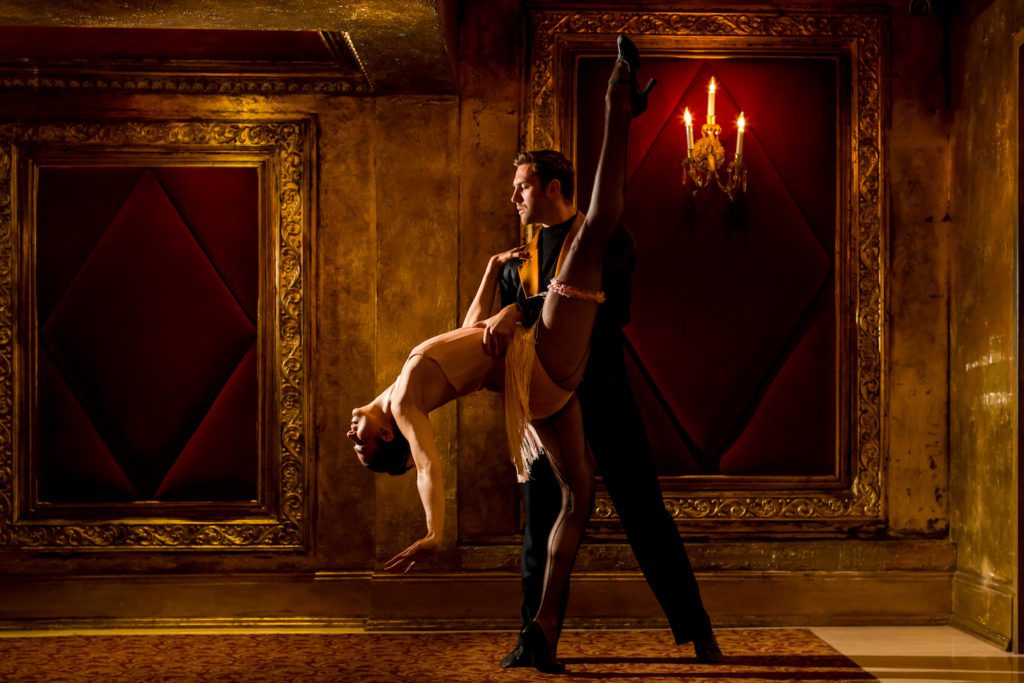The Washington Ballet’s ‘Balanchine + Ashton’
By • February 18, 2020 0 1765

“The twentieth century redrew the map of classical ballet,” writes Jennifer Homans in her comprehensive history, “Apollo’s Angels.” With roots in Renaissance Italy, ballet was formalized in 17th-century France — which accounts for its vocabulary — and went on to flourish in Denmark and Russia. Who would have guessed that its creative centers would one day move to England and, of all places, America?
The two choreographers chiefly responsible for redrawing the map, George Balanchine and Frederick Ashton, were both born near the century’s start, in 1904: Balanchine in Saint Petersburg, Russia (as Giorgi Melitonovitch Balanchivadze), and Ashton in Guayaquil, Ecuador, where his father was British vice-consul.
From Feb. 19 to 23, the Washington Ballet will present two works by Balanchine, “Allegro Brillante” and “Slaughter on Tenth Avenue,” and two by Ashton, “Birthday Offering” and “Méditation from Thaïs,” with the Washington Ballet Orchestra in the Kennedy Center Eisenhower Theater.
Marcelo Gomes, former principal dancer with American Ballet Theatre, will appear as a guest artist in “Allegro Brillante” and “Méditation.”
A miniature ballet, “Défilé,” created by Washington Ballet Artistic Director Julie Kent to celebrate the Washington School of Ballet’s 75th anniversary, honor founder Mary Day and showcase the school’s students, will be presented before each performance of “Balanchine + Ashton.”
Featuring seven couples dancing to music by Alexander Glazunov, Ashton’s “Birthday Offering” was premiered in 1956 to celebrate the 25th anniversary of the Royal Ballet, which had assumed that name and honor that very year. The company had begun in 1931 as the Vic-Wells Opera Ballet, named for the remarkable Lilian Baylis’s Old Vic and Sadler’s Wells theaters in London. Baylis had asked Ninette de Valois (born Edris Stannus) to do something about the dancing in Baylis’s opera and play productions and, in 1935, de Valois hired Ashton.
“Méditation,” an Ashton pas de deux that had its premiere in 1971, is set to the entr’acte for the opera “Thaïs” by Jules Massenet (the highly romantic music is also heard frequently at violin recitals).
An ensemble of 10 dances virtuosically to Tchaikovsky’s posthumously published Piano Concerto No. 3 in Balanchine’s “Allegro Brillante,” which dates, like “Birthday Offering,” to 1956. The first full-scale ballet in a Broadway musical, the jazzy “Slaughter on Tenth Avenue” was created 20 years earlier by Balanchine for the Richard Rodgers musical “On Your Toes,” in which Russian ballet dancers get mixed up with New York gangsters.
Balanchine, who studied music and dance in Russia, then choreographed for Diaghilev’s Ballets Russes in Paris, was brought to the U.S. (first to Hartford, Connecticut) by budding impresario Lincoln Kirstein in 1933 to plant seeds for ballet’s future in America. He and Kirstein founded the School of American Ballet the following year. After various false starts and projects on Broadway and in Hollywood, he co-founded, again with Kirstein, New York City Ballet in 1948.
Things were also about to take off for Ashton, who had moved from late-starting dancer to choreographer, not only for what was to become the Royal Ballet but for other companies and, like Balanchine, for films.
Ashton and Balanchine were “deeply interested in each other and deeply jealous,” said former New York Times Chief Dance Critic Alastair Macauley, who shared his insights on Feb. 9 at the Washington Ballet’s Joseph C. Coleman Studios on Wisconsin Avenue.
In his remarks, illustrated with slides and a few apologetic demonstrations of steps, Macauley compared and contrasted the two masters’ styles. Balanchine tended to have his dancers move through and beyond a space, for instance, while Ashton — who had learned from Bronislava Nijinska how to use the torso — tended to have them move within a space. According to dancers, Ashton’s favorite word was “bend” and his second favorite was “more,” Macauley said.
Balanchine was perceived to be more radical than Ashton, devising a classicism that, while chivalrous like Ashton’s, seemed to strip away dancers’ individuality (though he choreographed to the strengths of his muses, who he married, or attempted to marry, on several occasions). His work emphasizes the “tragic difference between the sexes,” said Macauley, while Ashton (who was gay) often focused on sensuality and sexuality, representing “bliss from a woman’s point of view.”
Also, the style of the Royal Ballet — which, unlike New York City Ballet, mounted classic story ballets in addition to new works — included acting, which its counterpart mostly steered clear of.
When they worked on pieces for each other’s companies, Ashton had to call out his rival for trying to make New York City Ballet’s prized ballerinas unavailable, Macauley noted. But the rivals influenced one another, too; he gave examples of steps borrowed from Ashton by Balanchine and vice versa.
At the Feb. 9 event, Kent referred to Balanchine and Ashton as a bridge between the Imperial Russian school of Marius Petipa and the contemporary choreographers whose works are performed in the Washington Ballet’s “NEXTsteps” series. And, she said, by presenting productions like “Balanchine + Ashton,” companies are serving “as a steward of the art form.”
Balanchine + Ashton
Kennedy Center Eisenhower Theater
Wednesday, Feb. 19 (preview), at 8 p.m.
Thursday, Feb. 20 (opening night), at 8 p.m.
Friday, Feb. 21, at 8 p.m.
Saturday, Feb. 22, at 2 and 8 p.m.
Sunday, Feb. 23 at 2 and 7 p.m.
Kennedy Center Box Office 202-467-4600

